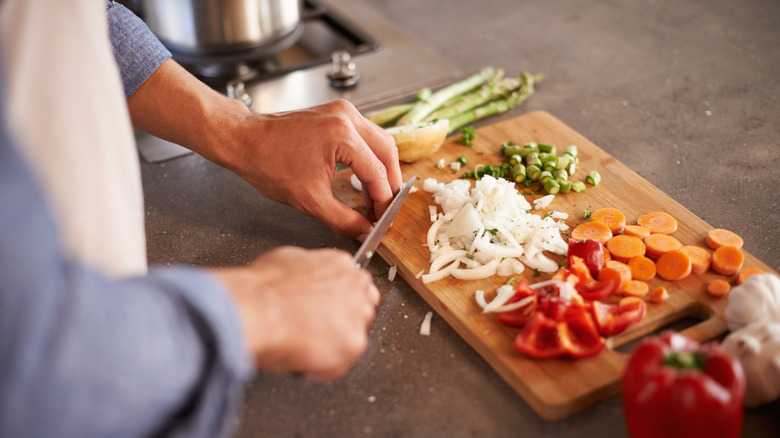Wooden cutting boards are beloved in the culinary world for their durability and aesthetic appeal. However, over time, even the finest boards can develop scratches. If you are a professional in the kitchen, knowing how to remove scratches from wooden cutting board is an essential skill to maintain the quality and hygiene of your kitchen tools.
This guide will provide you with detailed methods on how to treat scratches effectively, ensuring that your cutting board continues to serve you well without compromising its integrity. You will also learn how to care for cutting boards to prevent scratches in the future.

Understanding Your Wooden Cutting Board
Before we dive into the methods, it's crucial to understand the types of wood that are often used in cutting boards and their individual characteristics. Hardwoods like maple and walnut are popular choices due to their tight grains, making them less prone to scratches and damage.
Why It Matters
Scratches on your cutting board may not only be an eyesore but can also harbor bacteria. Maintaining a clean and scratch-free board is vital for food safety. Considering this, lets look into practical methods for removing scratches.
How to Remove Scratches: Effective Methods
1. Sanding It Down
Sanding is one of the most straightforward methods. Heres how to do it:
- Start with a fine sandpaper (around 220 grit). Wet the paper slightly to reduce dust.
- Gently sand the scratched area in the direction of the wood grain.
- Wipe away dust with a damp cloth.
- Follow up with a finishing product to seal the wood.
2. Using Mineral Oil
After sanding, applying mineral oil can rejuvenate the wood:
- Use a clean cloth to apply a generous amount of mineral oil.
- Let it sit for 15-20 minutes, then wipe off any excess.
3. Combining with Vinegar and Olive Oil
A natural solution involves mixing vinegar and olive oil:
- Mix equal parts of vinegar and olive oil.
- Scrub the scratched area lightly with this mixture.
- Wipe clean with a damp cloth and dry properly.
Preventing Future Scratches on Wooden Cutting Boards
Here are a few tips to keep your cutting board looking new:
Proper Handling and Maintenance
Ensure that you:
- Always use a sharp knife to reduce dragging across the surface.
- Store your cutting boards standing up to prevent warping.
Regular Oil Treatments
Frequent oiling (once a month) keeps the wood hydrated and helps prevent scratches.
Conclusion
Knowing how to remove scratches from wooden cutting board is vital for any kitchen professional. Implement these techniques, keep your boards in excellent condition, and ensure food safety. Regular maintenance not only extends the life of your boards but also enhances your cooking experience.

FAQs about Wooden Cutting Board Care
1. Can I use bleach on my wooden cutting board?
No, bleach can damage the wood and introduce harmful chemicals.
2. How often should I oil my cutting board?
You should oil your cutting board at least once a month to maintain its health.
3. What type of wood is best for cutting boards?
Hardwoods like maple, walnut, and cherry are ideal due to their resistance to scratches and bacteria.
As an Amazon Associate, I earn from qualifying purchases.


























